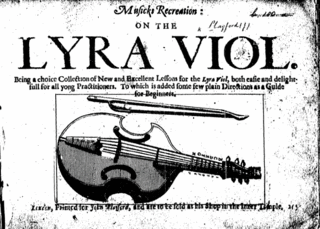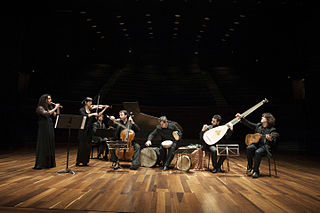
Renaissance music is vocal and instrumental music written and performed in Europe during the Renaissance era. Consensus among music historians has been to start the era around 1400, with the end of the medieval era, and to close it around 1600, with the beginning of the Baroque period, therefore commencing the musical Renaissance about a hundred years after the beginning of the Renaissance as it is understood in other disciplines. As in the other arts, the music of the period was significantly influenced by the developments which define the Early Modern period: the rise of humanistic thought; the recovery of the literary and artistic heritage of Ancient Greece and Ancient Rome; increased innovation and discovery; the growth of commercial enterprises; the rise of a bourgeois class; and the Protestant Reformation. From this changing society emerged a common, unifying musical language, in particular, the polyphonic style of the Franco-Flemish school, whose greatest master was Josquin des Prez.
Sheet music is a handwritten or printed form of music notation that uses modern musical symbols to indicate the pitches (melodies), rhythms or chords of a song or instrumental musical piece. Like its analogs – printed books or pamphlets in English, Arabic or other languages – the medium of sheet music typically is paper, although the access to musical notation since the 1980s has included the presentation of musical notation on computer screens and the development of scorewriter computer programs that can notate a song or piece electronically, and, in some cases, "play back" the notated music using a synthesizer or virtual instruments.

Arnolt Schlick was a German organist, lutenist and composer of the Renaissance. He is grouped among the composers known as the Colorists. He was most probably born in Heidelberg and by 1482 established himself as court organist for the Electorate of the Palatinate. Highly regarded by his superiors and colleagues alike, Schlick played at important historical events, such as the election of Maximilian I as King of the Romans, and was widely sought after as organ consultant throughout his career. The last known references to him are from 1521; the circumstances of his death are unknown.

The Burgundian School was a group of composers active in the 15th century in what is now northern and eastern France, Belgium, and the Netherlands, centered on the court of the Dukes of Burgundy.

Organ tablature is a form of musical notation used by the north German Baroque organ school, although there are also forms of organ tablature from other countries such as Italy, Spain, Poland, and England. Portions of Johann Sebastian Bach's Orgelbüchlein are written in tablature, as are a great deal of the surviving manuscripts of the organ works of Dieterich Buxtehude and other north German organ composers of the Baroque era.
Vincenzo Capirola was an Italian composer, lutenist and nobleman of the Renaissance. His music is preserved in an illuminated manuscript called the Capirola Lutebook, which is considered to be one of the most important sources of lute music of the early 16th century.

The Trecento was a period of vigorous activity in Italy in the arts, including painting, architecture, literature, and music. The music of the Trecento paralleled the achievements in the other arts in many ways, for example, in pioneering new forms of expression, especially in secular song in the vernacular language, Italian. In these regards, the music of the Trecento may seem more to be a Renaissance phenomenon; however, the predominant musical language was more closely related to that of the late Middle Ages, and musicologists generally classify the Trecento as the end of the medieval era. Trecento means "three hundred" in Italian but is usually used to refer to the 1300s. However, the greatest flowering of music in the Trecento happened late in the century, and the period is usually extended to include music up to around 1420.

The lyra viol is a small bass viol, used primarily in England in the seventeenth century.
Polish organ tablatures include some of the earliest and most important tablature sources of instrumental music in Europe. Particularly well-known is the Jan z Lublina tablature, which dates from mid-16th century and contains some 250 pieces. Most Polish organ tablatures use the German form of notation. The genres vary from all kinds of liturgical music to dances and vocal intabulations. This article presents a partial list of Polish organ tablatures, in chronological order.

Francesco Spinacino was an Italian lutenist and composer. His surviving output comprises the first two volumes of Ottaviano Petrucci's influential series of lute music publications: Intabolatura de lauto libro primo and Intabolatura de lauto libro secondo. These two collections comprise the first known printed lute music, and his first book was the first ever instrumental music book printed with the movable type system.

Hans Gerle was a German lutenist and arranger of the Renaissance.

The so-called Capirola Lutebook is one of the most important sources of early 16th century Italian lute music. It is an illuminated manuscript which comprises the entire surviving output of Vincenzo Capirola.
Suite in E minor, BWV 996, is a musical composition written by Johann Sebastian Bach (1685–1750) between 1708 and 1717. It is probable that this suite was intended for lute-harpsichord. Because that is an uncommon instrument, it is in modern times often performed on the guitar.

The Fronimo Dialogo di Vincentio Galilei is an instructional book on playing, composing and intabulating vocal music for the lute.
Cuthbert Hely was an English lutenist and composer who was active during the first half of the 17th century.
The Gdańsk Tablature is the common name used to refer to the collection of 42 keyboard pieces contained within a manuscript in the State Archive in Gdańsk dating back to 1591. The music is frequently presumed to be the work of Cajus Schmiedtlein. Some of the compositions in the manuscript are based on vocal works by Pierre Regnault Sandrin, Orlando di Lasso, Baldassare Donato, Jacob Clemens non Papa, Johann Walter, Claudin de Sermisy, Thomas Crecquillon, Domenico Ferrabosco, Jean de Latre, Jacquet de Berchem, Jakob Meiland, Alexander Utendal, Giaches de Wert and Germano Pallavicino.
The Buxheim Organ Book is a manuscript created around 1460/1470 with 256 original compositions and arrangements for keyboard instruments for the Buxheim Charterhouse in Germany, in today's district of Unterallgäu. Most of the composers are anonymous, but some are also known composers of the time.















